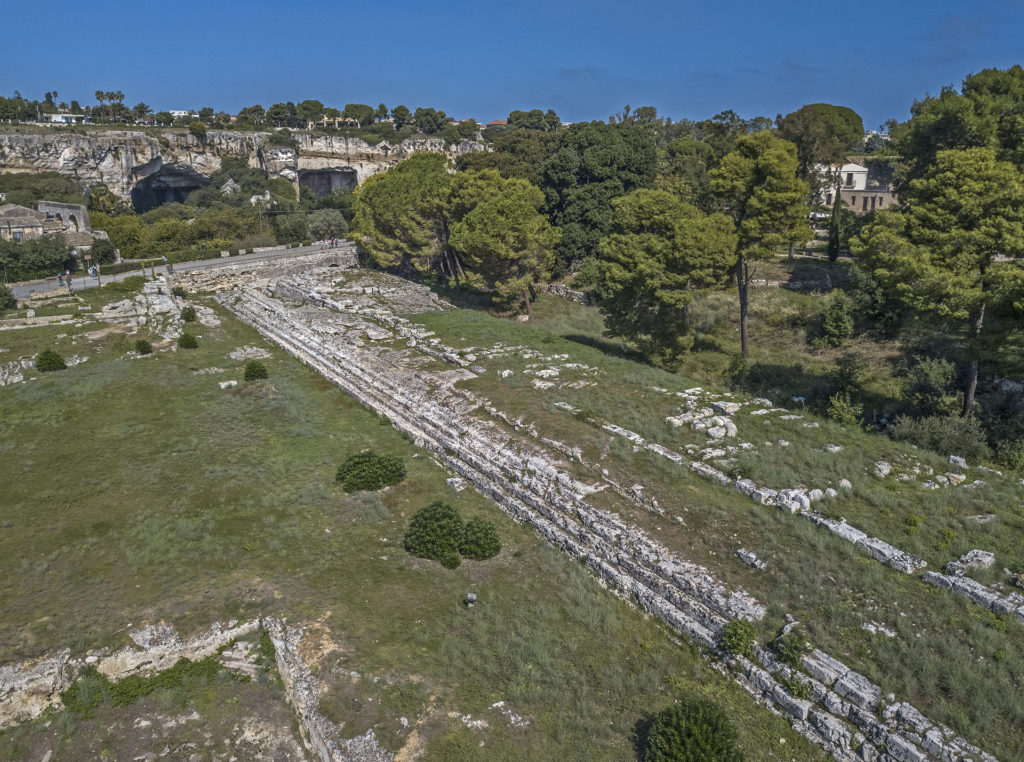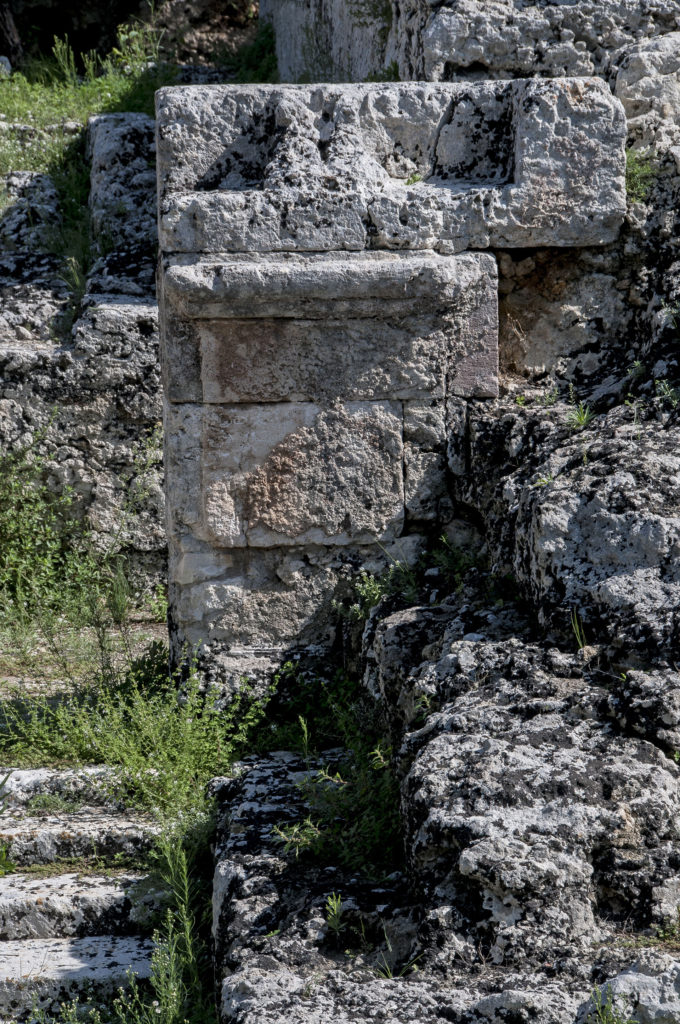According to the testimony of the historian Diodorus Siculus, the altar was erected by Hiero II near the theatre and was as long as an Olympic stadium, as shown by the rocky basement, as large as half a football pitch, which can still be seen today.
 On the north and south sides, there were two symmetrical entrances with ramps that led to an upper platform. The entrance to the north ramp was flanked by two
telamons
On the north and south sides, there were two symmetrical entrances with ramps that led to an upper platform. The entrance to the north ramp was flanked by two
telamons
.
 Animals to be sacrificed were led up the ramps while the worshippers walked up one side and down the other after offering their tribute to the deity. West of the altar there was a large rectangular square surrounded on three sides by a portico. In the centre of the square there was a basin with a base in the middle, perhaps intended to hold a statue.
Animals to be sacrificed were led up the ramps while the worshippers walked up one side and down the other after offering their tribute to the deity. West of the altar there was a large rectangular square surrounded on three sides by a portico. In the centre of the square there was a basin with a base in the middle, perhaps intended to hold a statue.
Archaeologists have speculated that this altar was dedicated to Zeus Eleutherios. As Diodorus Siculus wrote, after the expulsion in 466 BC of the last of the tyrants, Thrasybulus, the Syracusans erected a colossal statue dedicated to Zeus, in whose honour the feast of the
Eleutheria
was celebrated, linked to the city’s liberation from its enemies.